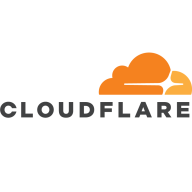


Forcepoint Data Loss Prevention and Microsoft Purview Data Loss Prevention compete in the data protection category. Microsoft Purview seems to have the upper hand due to its seamless integration with the Microsoft ecosystem, enhancing compliance and security capabilities.
Features: Forcepoint Data Loss Prevention includes extensive features like template support, fingerprinting technology, and optical character recognition. Microsoft Purview Data Loss Prevention is integrated across Microsoft's ecosystem, with features such as automatic labeling, cross-platform support, and comprehensive compliance tools.
Room for Improvement: Forcepoint faces challenges with integration, false positives, and support in languages like Bangla, alongside deployment and policy management difficulties. Microsoft Purview requires better incident handling, improved integration with third-party systems, and better support for non-Microsoft environments or languages like Ukrainian.
Ease of Deployment and Customer Service: Forcepoint's deployment is primarily on-premises with moderate customer service, experiencing complexity and varied support responses. Microsoft Purview offers more deployment flexibility across hybrid and public cloud setups and provides robust technical support, especially within Microsoft's ecosystem, though there are some slow response claims.
Pricing and ROI: Forcepoint is generally expensive, justified by its comprehensive suite, which can be a barrier for smaller firms but yields ROI through enhanced data monitoring and compliance. Microsoft Purview's economical pricing, especially when bundled with Microsoft 365 licenses, provides competitive value and good ROI through integrated security capabilities.
WordPress security can be tricky, and that's where Cloudflare can be absolutely helpful for small businesses.
For the small project I was working on, using the basic tier provided a huge improvement at zero cost.
In terms of return on investment with Cloudflare, it costs my time to set them up, but basically once they're set up, it's done.
This would help us address issues promptly, especially during unforeseen events like DDoS attacks.
Cloudflare does not offer hands-on technical support to fix customer problems but rather a self-service model.
I would rate the technical support with Cloudflare as excellent every time I've had to call them.
They conduct sessions to check logs and policies, unlike Symantec, where engineers may temporarily check and ask for logs, causing delays.
Once we got to the Microsoft engineers, the experience was great.
It is a SaaS tool, but the fact that they have workloads deployed across the world proves that it is a highly scalable tool.
The tool offers very good performance, even during high-traffic periods.
I rate the solution’s scalability an eight out of ten.
The key principle of a scalable DLP uses a single policy engine across multiple data channels such as endpoint, email, web, cloud, and network.
The policy working and detection technology need enhancements.
For DDoS protection, I would not recommend Cloudflare.
I rate the solution’s stability an eight out of ten.
The service is very stable with no impacts during high-traffic periods.
The stability of Forcepoint Data Loss Prevention is reliable, with minimum crashes, errors, or performance issues.
Sometimes the solution is not stable when the internal connection is not reliable, so this aspect needs improvement.
There's a need for improvement in areas like AI-based DDoS attacks and Layer 7 WAF features.
Despite these challenges, overall, Cloudflare remains the preferred solution compared to Azure, AWS CloudFront, and Google Cloud Armor.
Areas like how assessment, discovery, and payload are dealt with and how it all comes into your organization can be considered when trying to make suggestions to Cloudflare for improvements.
While Forcepoint is mostly on-premises, I suggest that to compete with Symantec, they should consider cloud solutions.
Improvement in Forcepoint Data Loss Prevention, especially when applying a positive DLP approach, needs to focus on decreasing false positive incidents.
Implementing a degree of severity ranking is essential.
Endpoint Data Loss Prevention needs to be improved as it is not up to expectations.
That's where Cloudflare shines for smaller businesses – it's ten times cheaper than Akamai.
I find it to be cheap.
The pricing for the service is reasonable, neither excessively cheap nor prohibitively expensive.
The pricing is reasonable and medium, not very low, but fair for the product offered.
The most valuable features of the solution are performance and security.
Techniques like minification and image compression reduce the size of assets, leading to better performance and faster user load times.
The solution has been able to compare it to the market, and I think the product has taken great strides in automating quite a bit of things, and they use a lot of AI.
It provides multiple customization options for policies, which makes it superior to Symantec.
It supports 50 file types and continuously improves accuracy with user feedback, enabling auto-discovery across cloud, endpoint, and on-premises data stores without extra cost of repeated scans.
Microsoft Purview Data Loss Prevention usually performs well, except for endpoint Data Loss Prevention, which may need improvements.
The feature I find most valuable that I'm currently using is the quickness of the emails that the Microsoft Purview Data Loss Prevention solution sends to us, where we get notifications that say a user has potentially breached our data guideline rules, and we get those alerts continuously, allowing us to enforce them manually.



| Company Size | Count |
|---|---|
| Small Business | 46 |
| Midsize Enterprise | 8 |
| Large Enterprise | 25 |
| Company Size | Count |
|---|---|
| Small Business | 30 |
| Midsize Enterprise | 6 |
| Large Enterprise | 27 |
| Company Size | Count |
|---|---|
| Small Business | 10 |
| Midsize Enterprise | 3 |
| Large Enterprise | 12 |
Cloudflare is a highly-regarded Content Delivery Network (CDN) and a Distributed Denial-of-Service (DDoS) protection solution. The robust global connectivity cloud platform that is Cloudflare ensures users are able to connect to the Internet quickly, securely, and reliably. Cloudflare is one of the world's largest networks in the marketplace today. Using Cloudflare, businesses, educational entities, NGOs, vloggers, bloggers, and anyone else with an internet presence can experience more secure, faster websites and applications.
Currently, there are millions of Internet locations on Cloudflare, and the Cloudflare network
continues to grow every day by the thousands. The solution is able to fulfill the requests for
millions of websites seamlessly and serves on average 45 million HTTP requests per second.
Cloudflare has safe, secure data centers in close to 300 cities worldwide to ensure every
client request is filled as quickly as possible. It is Cloudflare’s edge network that makes this
possible by keeping content and other services as close to each client as possible, so the
information requests are always only seconds away.
Many organizations that work in democracy, civil society, human rights, or the arts are able to
access Cloudflare's highest levels of protection for free via Project Galileo. Additionally, official
election websites can be secured from hacking and fraud through Cloudflare’s Project
Athenian, also at no additional cost.
Cloudflare can also help organizations of all sizes develop a robust zero-trust strategy to
ensure the highest levels of productivity and profitability. Employees, stakeholders, and end users have a greater level of satisfaction and overall improved user experience, which can, in
turn, result in higher revenues and overall ROI. Zero-trust and BYOD (bring your own device)
access ensure end users and employees always have the best resources and technology
available to them at all times.
Cloudflare benefits
Cloudflare has many benefits. Some of its most valuable benefits include:
- Faster load times
- Robust DNS security
- Intuitive cloud Web Application Firewall (WAF)
- Free universal SSL
- Image enhancement
- Automatic browser caching
- Next-generation cloud load balancer
- Accelerated Mobile Pages (AMP)
- Rate limiting
- Minification
- Zero-trust capabilities
- Cost-effective
- Reduced carbon footprint
Reviews from real users
“Many websites require an SSL certificate because they sell stuff and want SSL. Cloudflare
comes with an SSL certificate built in. It's automatic. You sign yourself up for Cloudflare, and
an SSL certificate automatically protects your website. If you have a connection between your
website and your host, the server, Cloudflare, and the host, you don't necessarily need a
certificate.” Spencer M., Owner at Tech Exchange
“What I like best about Cloudflare is that my company can use it to trace and manage
applications and monitor traffic. The solution tells you if there's a spike in traffic. Cloudflare
also sends you a link to check your equipment and deployment and track it through peering,
so it's a valuable tool.” Daniel P., Network Engineer at Ufinet
“The most valuable feature of Cloudflare is the GUI. You are able to control the solution very
well through the interface. There is a lot of functionality that is embedded in the service.” PeerSpot user, Competence Center Manager at a tech services company
Forcepoint Data Loss Prevention offers comprehensive data protection with strong template support, seamless cloud integration, and detailed reporting. It ensures data security through extensive endpoint, network, and server-level controls.
Forcepoint Data Loss Prevention is equipped with advanced fingerprinting technology, optical character recognition, and a large library of predefined rules. Organizations gain comprehensive data visibility and effective policy enforcement, supported by dynamic user behavior analysis and compliance capabilities. Its intuitive interface and flexible deployment options position it as a top choice for data security, although it could improve in communication reliability and language support. Complex reporting, machine learning integration, and cross-platform compatibility require enhancements.
What are the key features of Forcepoint Data Loss Prevention?Forcepoint Data Loss Prevention is utilized extensively in industries like finance and law to protect sensitive information from unauthorized transfers. It secures enterprise legal documents, financial assets, and personal data, employing features such as OCR to safeguard data across network, email, and cloud channels.
At Microsoft, our mission is to empower every person and every organization on the planet to achieve more. Our mission is grounded in both the world in which we live and the future we strive to create. Today, we live in a mobile-first, cloud-first world, and the transformation we are driving across our businesses is designed to enable Microsoft and our customers to thrive in this world.
We monitor all Data Loss Prevention (DLP) reviews to prevent fraudulent reviews and keep review quality high. We do not post reviews by company employees or direct competitors. We validate each review for authenticity via cross-reference with LinkedIn, and personal follow-up with the reviewer when necessary.